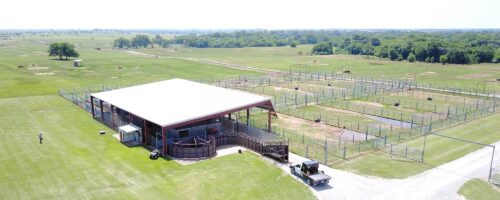If your pond is low due to drought conditions, this might be the perfect time to renovate poor or marginal largemouth bass, bluegill and channel catfish populations or eliminate undesirable fish such as bullheads, common carp, warmouth and green sunfish. If your pond is dry, you will need to make plans to deepen it before stocking fish next spring when, hopefully, it’s full again.
When the water level is low in a pond, there are two ways to remove a fish population: draining the
water or applying rotenone, a chemical treatment. With an extended drought, Mother Nature can save a lot of the time, money and hard work involved by lowering pond water levels or completely drying them up.
Draining a pond with a low water level requires less time, but access can sometimes be difficult, especially in older ponds. Silt accumulation that is now exposed can make reaching the water with a suction or siphoning hose difficult if it is still too soft to support the weight of a person or equipment.
Siphoning is a low cost method of draining a pond, but can be slow depending on pipe size and flow rate. Pumping is faster, but more expensive because of associated costs such as buying or renting a pump and fuel. Cutting a dam is a fast and effective way to drain a pond and dry out sediments, but it is the most expensive method because of costs associated with cutting and repairing the dam. If bullheads are present, keep the pond dry for at least six weeks to eliminate them. A note of caution: the pond owner is responsible for any damage resulting from the overflow of pumped water.
The cost of applying rotenone is also reduced when the water level in a pond is low. Rotenone is
usually needed because cyanobacteria blooms or low dissolved oxygen does not always kill all fish in a pond. Application rates are based on volume of water in the pond to be treated. Rotenone kills fish by inhibiting the blood’s ability to use oxygen and is more effective in warmer water because fish metabolism is higher and dissolved oxygen levels are lower, but it also breaks down faster.
Application rates range from 0.2 to 1.3 gallons per acre foot, depending on the targeted fish species and nutrient levels in the pond. If nutrient levels are high, if there is a lot of turbidity or sediments, or if bullheads or common carp are present, more rotenone is needed. The cost for 1 gallon of rotenone is about $100. Rotenone is a restricted use pesticide, so a private applicator’s license is needed to use it.
A boat motor prop is often used to mix rotenone in the water column, but if the water level is too low for boat use (or access) without stirring up sediments, a power sprayer can be used. Spray rotenone evenly across the surface. The pressure from the droplets should be enough to mix the chemical into the water column. It may also be wise to use the higher recommended rate when applying rotenone with a pressure sprayer. Inspect the pond at dawn to evaluate effectiveness of the treatment. Rotenone usually detoxifies in two to four weeks. For details on how to apply rotenone, see Rotenone Can Remove Undesirable Fish From a Pond.
New fish should not be stocked until after rotenone detoxifies and there is sufficient water – usually at least 7 feet of depth, but preferably more. If the drought continues or worsens, it might be a year or longer before fish can be restocked. To restore a largemouth bass and bluegill fishery, stock 500
fingerling bluegill per acre in the fall and 100 fingerling bass per acre the following spring. If desired,
channel catfish can be stocked at the same time as bluegill at 100 fingerlings per acre. Drought is tough on all of us. However, it can create an opportunity for many pond owners to set the stage for a new and improved fishery.



Comment